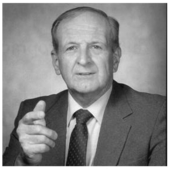The recent passing of Chester A. Wilk, DC, 91, of Park Ridge, Ill., is a reminder of one of the most important chapters in chiropractic history, which ultimately cleared a path to progress in areas such as integration, research and education that might not have existed otherwise. Dr. Wilk, along with three other doctors of chiropractic, were plaintiffs in the seminal Wilk vs. AMA lawsuit, which exposed an illegal conspiracy and boycott by the medical establishment designed to destroy the chiropractic profession. He later recounted his experiences in the book Medicine, Monopolies and Malice.

The Wilk case exposed a dark period in the history of relations between the chiropractic and medical professions. The conspiracy, conducted through the American Medical Association (AMA) “Committee on Quackery” was designed to “contain” the growth and development of the chiropractic profession. It was carried out through several key strategies, including preventing access by chiropractors to research and education funding, prohibiting the inclusion of chiropractic services in hospitals and health plans, and banning MDs from referring patients for treatment to chiropractors or even associating with them on a social level.
The Committee also distributed publications critical of chiropractic. It was one of these booklets that eventually found its way into the hands of Dr. Wilk, who upon reading it was determined to take legal action, according to Howard Wolinsky, a reporter who covered the case for American Medical News. Those who worked beside him say Dr. Wilk’s resolve to seek justice was intense.
The case, which lasted 14 years and tested the endurance and commitment of Wilk and the other plaintiffs as well as their attorney George McAndrews (who came from a large family of chiropractors), was initially lost during a jury trial in 1976. An appeal and a change of strategy led to a bench trial in 1987, during which Judge Susan Getzendanner heard the evidence and issued an opinion that the AMA had in fact violated Section 1 of the Sherman Act and had engaged in an unlawful conspiracy in restraint of trade “to contain and eliminate the chiropractic profession.” She issued an injunction order against AMA, permanently enjoining it from restricting the freedom of any AMA member or hospital from associating with chiropractors or chiropractic institutions.
The U.S. Court of Appeals in 1990 upheld Getzendanner’s decision, and that same year the U.S. Supreme Court denied three attempts by AMA to have the case heard in the nation’s highest court.
Dr. Wilk’s courage and tenacity have left an indelible mark. Though there are still challenges today, the chiropractic profession achieved impressive growth following the injunction. Chiropractic colleges now receive federal research funding, many chiropractors over the years have attained hospital privileges and work in large federal healthcare systems such as the Veterans Administration (VA) and the Department of Defense, and chiropractors are represented on important national healthcare advisory panels, including AMA’s own CPT Advisory Group.
In a blog post celebrating the 125th anniversary of the chiropractic profession, historian Patrick Montgomery, DC, MS, FASA, FICC, noted that the Wilk vs. AMA case, and the resulting injunction, “halted the assault on the integrity and validity of chiropractors and chiropractic care” and created new opportunities.
“It was not until the Wilk trial that greater cooperation between the other health fields and chiropractic was allowed. This eventually opened the door for the ability of DCs to serve patients in the VA system and gradually into other health systems…,” wrote Dr. Montgomery. “This inclusion of chiropractic physicians and greater access to patients within the medical system was the dream of a good portion of the profession. It did not seem possible in the days of the Committee on Quackery. Now, many students entering our schools look toward working in those facilities[.]”
